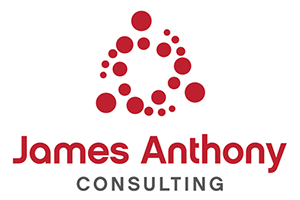Planning a Marketing Campaign: A Step-by-Step Guide
Marketing campaigns are essential for businesses looking to achieve specific objectives, whether that's growing an audience, engaging existing followers, or converting them into loyal customers. At James Anthony Consulting (JAC), we know the value of structured planning and execution when it comes to achieving measurable results. Here’s a comprehensive guide on planning a successful marketing campaign using our proven framework.
Plan Your Strategy
The foundation of any campaign is a clear strategy. This involves defining your goals, call-to-action (CTA), target audience, and key performance indicators (KPIs). Let’s break these down:
Set Your Goal
Begin with a specific and measurable goal. Examples include:
Grow Audience: Increase social media followers by 20% in three months.
Engage Audience: Achieve a 10% increase in email click-through rates.
Leverage Audience: Convert 50 leads into paying customers through a new product launch campaign.
Define Your Call-to-Action (CTA)
What do you want your audience to do? Your CTA should be compelling and actionable. For instance:
"Sign up for our newsletter."
"Visit our store today."
"Register for the free webinar."
Know Your Target Audience
Understand who you’re speaking to. Define their demographics, interests, challenges, and preferences. Create audience personas to visualise their needs and motivations.
Establish Your KPIs
Key performance indicators help track the success of your campaign. Examples include:
Social media reach or impressions.
Website traffic or bounce rates.
Conversion rates or sales figures.
Decide Your Tactics
Once your strategy is clear, it’s time to decide on the tactics. This step involves choosing your channels, crafting your messaging, designing creative assets, and allocating a budget.
Select Your Channels
Identify where your audience spends their time and how they prefer to engage. Some effective options include:
Social media platforms (e.g., Facebook, Instagram, LinkedIn).
Email newsletters.
Paid ads (Google Ads, social media ads).
Events or webinars.
Craft Your Messaging
Your messaging should resonate with your audience and align with your campaign goal. For example:
For a grow audience goal: “Discover expert tips by following us today!”
For an engage audience goal: “Unlock exclusive content in this month’s newsletter.”
For a leverage audience goal: “Don’t miss out—book your spot now!”
Create Compelling Visuals and Content
Develop creative assets that grab attention and reinforce your messaging. These might include:
Eye-catching social media posts.
Informative blog articles.
Professionally designed infographics or videos.
Set Your Budget
Allocate resources to ensure your campaign delivers results without overextending. Consider:
Costs for ads, content creation, and software tools.
Return on investment (ROI) expectations.
Why Structure Matters
Having a structured approach ensures that every campaign is focused, data-driven, and results-oriented. By planning strategically and executing tactically, you can maximise your efforts and achieve your marketing objectives efficiently.
At JAC, we help businesses implement and optimise their marketing campaigns. Whether you’re planning your next big launch or looking to revitalise your brand’s engagement strategy, our team is here to support you.
Ready to plan your next marketing campaign? Contact JAC today and let’s bring your vision to life!

